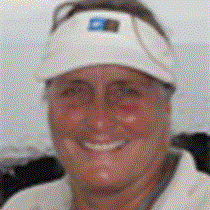Santa Cruz
We anchored just at sunrise in Academy Bay off the island of Santa Cruz and the town of Puerto Ayora. The bay was named after the California Academy of Sciences and their important collecting expeditions that came to Galápagos in the early 1900’s. Puerto Ayora (named after a much loved Ecuadorian president) is the largest town in the islands with over 20,000 inhabitants and is also the home of the headquarters of both the Charles Darwin Research Station and the Galápagos National Park Service.
We disembarked at the National Park Service dock and walked into the CDRS to visit the captive breeding center where giant tortoises that are endangered are being raised and then repatriated to the islands of their origin. This tortoise breeding project has been very successful, and since it began in the mid 1960s several thousands of young tortoise have been released into the wild. The very rare tortoises of the southern island of Española have been brought from the edge of extinction—and a total world population of only 15 individuals—to a healthy population of a couple thousand animals that are now breeding again in the wild. This morning at CDRS we enjoyed seeing the tiny hatchling tortoises as well as large adults from several different species.
We walked a mile down towards town—I call this the “T-shirt mile” because in the many souvenir shops along the way one can purchase a variety of T-shirts and numerous other items. Some of us enjoyed shopping and taking photos; we all had a good time at the fish market where a brazen sea lion and several pelicans were begging for fish scraps from the fishermen who were cleaning their fish. We gathered at “The Rock” café for a glass of juice and then boarded buses to take us to the highlands.
Many of us took the optional quarter-mile walk through the lava tunnel, and we climbed out just next to the farmer’s restaurant where our delicious buffet lunch was being served. After a great meal we visited another part of the Arias’ farm and were delighted to find nine tortoises feeding and resting in the lush vegetation. Among these wild tortoises were several really large males! We boarded the buses and drove further up into the highlands to visit Los Gemelos pit craters where we walked in the Scalesia forest—this is an endemic daisy that grows into a small tree—and searched for Darwin’s finches.
Later, back in the town, many of us headed back to the National Geographic Islander to rest. Others stayed on shore to shop and watch the animated volleyball games—they were playing “Ecuavoli” to be exact, and it is played three on a side and with a soccer ball—being played in the municipal park. After dinner tonight we enjoyed music and dances performed by local artists of the EcoArte group.




